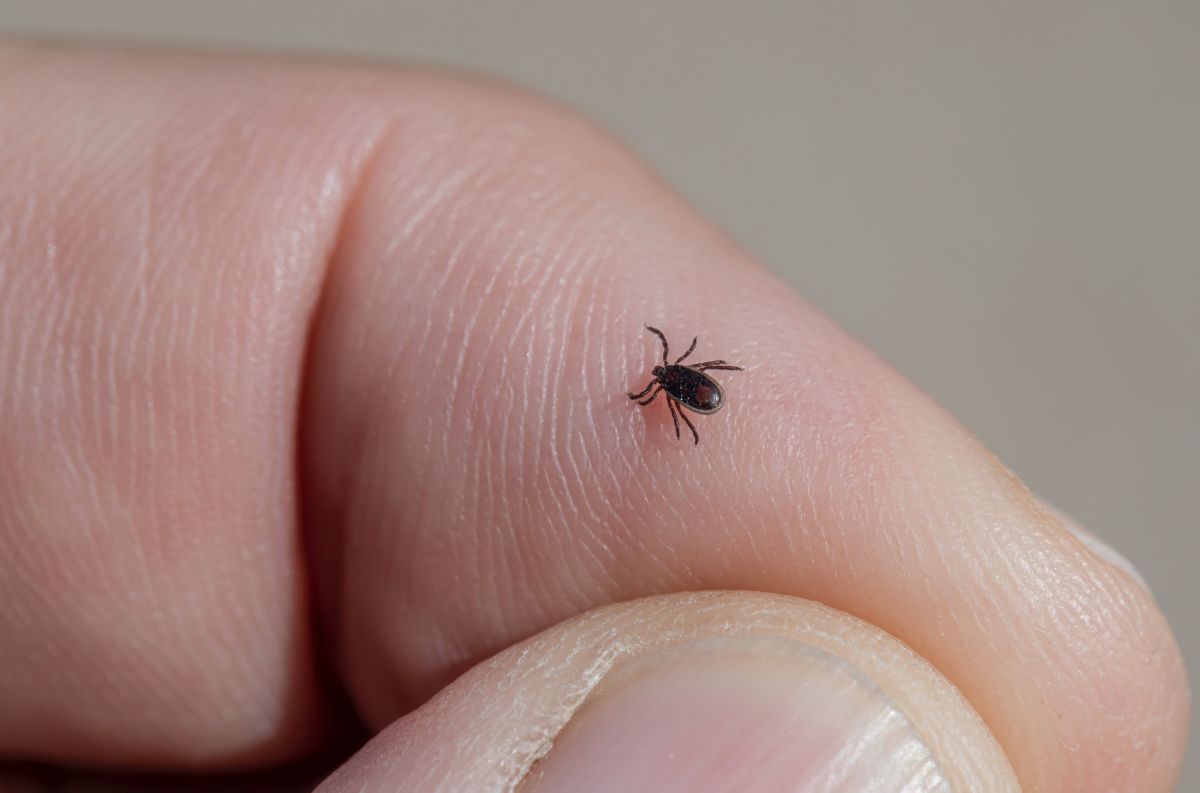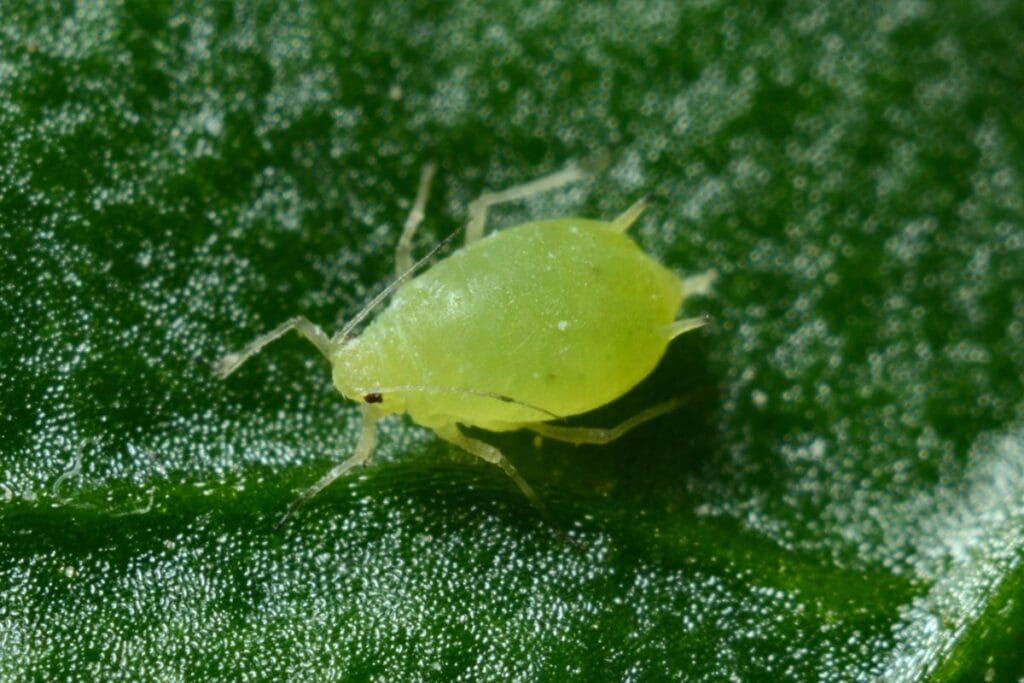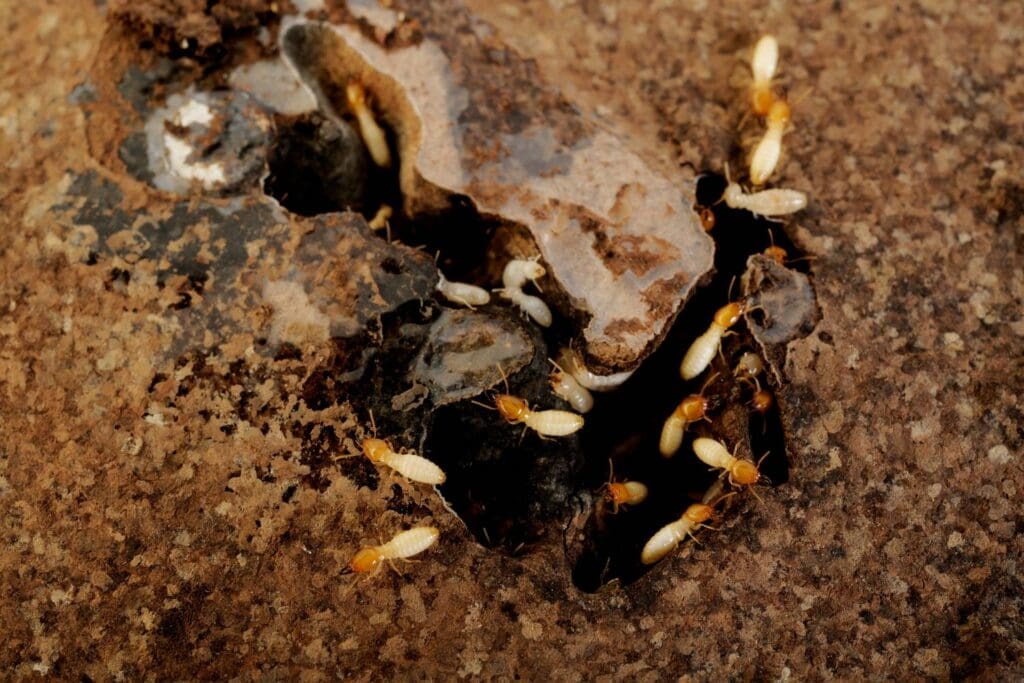Ticks are a regular source of frustration for dog owners and can lead to major health problems for canines. Infestations of ticks on dogs can lead to the spread of diseases including Lyme disease and Rocky Mountain spotted fever. These illnesses, if untreated, can cause serious complications or even death. Ticks on a dog may be a frustrating and distressing experience for their owners, who often wonder what to do.
The good news is that there are a number of things pet owners can do to protect their pets against ticks and to securely remove them when they are found. Check your dog for ticks frequently, especially after returning from a walk or excursion through forested areas. Make sure your dog's coat is in good shape by combining it with a fine-toothed comb, paying special attention to the dog's ears, neck, and paws.
Second, discuss tick prevention medicine with your vet to reduce the likelihood of ticks on your dog. Finally, if you discover a tick on your dog, remove it with tweezers by gently gripping the tick as close to the skin as possible and dragging it out in one straight motion. If you twist or jerk the tick, it may break apart and remain embedded in your dog's skin.
There is widespread worry among dog owners about the effects of ticks on their pets. Ticks are a source of concern for many dog owners, who may not know what to do if they discover the parasites on their pets. Fortunately, there are a number of measures you can take to safeguard your dog and eliminate ticks in a risk-free manner. Everything you need to know about ticks, from how to look out for them to how to get rid of them safely, is included in this article. A dog's health and happiness depend on you taking these measures.
Different Ticks that Can Affect Dogs
Recognising the appearance and location of ticks is crucial. In Australia, the most common ticks that infest dogs are the paralysis tick, the brown dog tick, and the bush tick.
Paralysis Ticks
The eastern coast of Australia, from Cape York in the north to Lakes Entrance in the south, is a common habitat for paralysis ticks. They are occasionally spotted further afield, such as in the Melbourne metro area. Ticks release a poison that paralyses canine and feline hosts, making them one of the most hazardous parasites your pet can contract.
Brown Dog Ticks
The brown dog tick can be found all over Australia. While brown ticks can't paralyse their hosts, they can irritate the skin and cause significant blood loss, which can lead to anaemia in extreme cases. Ticks that feed on dogs, like the brown dog tick, can spread diseases between canines, some of which can be fatal. Brown dog ticks are known to spread the pathogen known as Ehrlichia canis. In 2020, this potentially lethal disease spread by brown dog ticks was discovered for the first time in Australia.
Bush Tick
Bush ticks are native to Australia and can be found in both eastern and western regions. A bush tick should be removed immediately if discovered on a dog. When they bite, bush ticks can irritate the skin and spread dangerous infections like babesiosis.
When Do You Know Your Dog Has Ticks?
Bloodsucking ticks are a common summertime pest for canine companions. As they feed on the dog's blood, they become embedded in the skin and can lead to a host of issues. Dog owners should be aware of the signs of tick infestation on their pets to head off any health problems.
Ticks are one of the most noticeable parasites that can infest dogs. Ticks can be discovered on your dog anywhere, but they tend to cluster around the ear and neck area, as well as in the cracks between their toes. Ticks are tiny, spherical insects that are often dark in colour. Depending on how long they have been eating, they can grow to be as big as a grape or as small as a pinhead.
Ticks on dogs can also cause the animal to itch excessively. Ticks can cause discomfort or irritation for dogs if they crawl onto their skin. Tick bites can become inflamed and irritated if the victim scratches or bites at the area.
When ticks bite dogs, they can spread disease. Lyme disease, Rocky Mountain spotted fever, and ehrlichiosis are just a few of the diseases that ticks can carry. Flu-like symptoms, fatigue, loss of appetite, joint discomfort, and lymph node swelling are all possible outcomes of these conditions.
Ticks have been linked to anaemia in dogs. When there aren't enough red blood cells to transport oxygen across the body, a condition known as anaemia sets in. If a dog has a lot of ticks biting them and drinking their blood, this can happen. Pale gums, weakness, and fatigue are all signs of anaemia in dogs.
Dogs aren't the only ones that can have an allergic reaction to tick bites. Tick saliva contains proteins that can trigger an allergic reaction in dogs that are vulnerable to them. Allergic reactions can cause swelling, hives, and breathing problems. Ticks on dogs can cause serious illness if not removed as soon as possible. Tick bites can lead to illnesses and abscesses. They can also spread parasites like tapeworms and other worms.
Guide How To Remove A Tick
It's crucial to immediately and effectively remove any ticks you find on your dog, despite the fact that doing so might be uncomfortable. Tick paralysis, caused by a tick bite, is a potentially lethal illness that needs immediate veterinarian care.
What You’ll Need?
Before starting the tick removal process, gather all the necessary tools and supplies. It is important to have everything readily available when dealing with an anxious animal. The following items are needed to successfully remove a tick:
- Pointy tweezers: It is recommended to use tweezers with a tight and pointed tip for better grip and to avoid tearing the tick apart.
- Rubbing alcohol: This will be used to disinfect the bite wound and to kill the tick.
- Antiseptic wipes or ointment: After removing the tick, the bite site should be cleaned and disinfected to prevent infection.
- Sealed container: Place the tick in a container with rubbing alcohol to ensure it is dead. This will also allow for further examination if your pet develops symptoms.
For those living in high tick infestation areas, tick hooks and tick twisters can be useful tools, which can be obtained from drugstores or animal hospitals.
It is important to remain calm during the tick removal process to make it easier for your dog. Dogs can become easily startled and uncomfortable with any handling. Enlist the help of a friend to hold your dog and keep it calm.
To remove the tick, carefully part your dog's fur to expose the tick and prevent pinching the skin. Use the pointy tweezers to grasp the tick as close to the skin as possible. Give the tick a twist in either a clockwise or anticlockwise motion and pull it straight up. Ensure that the head and mouth parts are completely removed. If you are unable to remove the tick, it is advisable to take your dog to the veterinarian for assistance.
After removing the tick, place it in a container with rubbing alcohol to ensure it is eliminated. If your pet shows any symptoms, keeping the tick in a sealed container may be helpful for further examination. Clean the bite wound with antiseptic wipes or apply antiseptic ointment. Monitor the area for any signs of infection. Remember to wash your hands and disinfect the tweezers after the procedure.
Reward your dog for good behavior during the process with praise and a treat. Keep a close eye on your dog for the next few days and watch for any symptoms that may indicate a tick-borne illness. Symptoms to monitor include fatigue, difficulty in movement, breathing problems, unsteady gait, loss of appetite, coughing, vomiting, excessive salivation, or collapse. If any of these symptoms occur, it is important to seek veterinary attention promptly.
How to Protect Your Dog From Tick Infestations?
In order to get their blood meal, ticks attach themselves to mammals. Ticks are known to transmit a wide variety of diseases to dogs, including Lyme disease and spotted fever. Preventing a tick infection in your pet is, thus, essential. Additional information on how to protect your dog against ticks is provided below.
Take Precautions Against Ticks
Topical treatments, medications, and collars are all viable options for warding off ticks. These preventatives work by either discouraging ticks from attaching themselves to your dog or killing them on contact. The flea and other parasite protection offered by some tick preventatives is an added bonus. Depending on your dog's age, size, and health, your vet can recommend the best tick prevention.
Maintain a Neat Backyard
Ticks love to live in dense vegetation like long grass and bushes. Therefore, it is crucial to maintain a neat yard by mowing the grass frequently, trimming the shrubs, and clearing away any trash or piles of leaves. It is possible to create a tick-free zone around your yard by applying a tick control solution if you reside in an area with a high tick population.
Maintain Frequent Dog Checkups
Make it a habit to examine your dog for ticks after every time it spends time outside. Ticks tend to hide in a person's ears, neck, and underbelly, so it's important to check these areas thoroughly. If you detect any ticks, pick them off with a fine-toothed comb and put them in a plastic bag before throwing them away.
Avoid Tick-Infested Areas
Keep your dog out of wooded areas, long grass, and areas with plenty of leaf litter to reduce the risk of tick bites. Make sure to use tick preventatives and perform a thorough check for ticks on your dog after visiting these areas.
Use Tick Repellents
Lemon eucalyptus oil, lavender oil, and peppermint oil are just a few examples of natural tick repellents that you can apply on your dog. Mix equal parts of apple cider vinegar and water and spray it on your dog's fur to repel ticks. If you have a dog, it's important to remember that some essential oils are poisonous.
Keep Your Dog's Bedding Clean
Cleaning your dog's bedding and toys on a regular basis might help keep your home free of ticks. Ticks can also take up residence in your carpets and furniture, so it's important to frequently vacuum these spaces.
You can protect your dog against ticks and ensure his or her continued good health by following these steps. Always check with your vet immediately if you see any symptoms that could indicate a tick infestation or tick-borne illness in your dog.
Conclusion
Ticks can cause serious health issues and are a major source of aggravation for dog owners. Dog owners can protect their pets from ticks by performing regular tick checks, brushing their dogs' coats, consulting with their veterinarian about tick preventive medicine, and removing ticks manually using tweezers. The ideal technique to remove a tick is to gently grasp it as near to the skin as possible and to pull it out in one smooth stroke. Dog owners worry about ticks, but there are ways to keep them at bay without putting Fido at risk. There are three species of ticks found in Australia that commonly infest canines: the paralysis tick, the brown dog tick, and the bush tick.
Ticks such as paralysis ticks can paralyse their canine and feline hosts by releasing a poison, whereas ticks such as brown dog ticks can irritate the skin and cause blood loss. Australian dogs should have any bush ticks removed as soon as possible. In order to prevent health concerns, dog owners in the summer should be aware of the warning symptoms of a tick infestation. Dogs can get parasitic tick disease. They are little, round insects that can range in size from a grape to a pinhead.
They are a potential health risk since they can transmit infections, including Lyme disease, Rocky Mountain spotted fever, and ehrlichiosis, in addition to causing discomfort and irritation. Anaemia, which causes pale gums, weakness, and weariness, has also been associated with them. Remove ticks from your dog immediately to prevent catastrophic sickness. A tick hook or twister, rubbing alcohol, antiseptic wipes, or ointment, a sealed container, and pointed tweezers are all essential items for removing a tick. If you want to make the process of removing ticks from your dog easier, remember to keep your cool.
Carefully split the dog's fur to expose the tick, then grab it with the tweezers' pointed end, twist it once, and pull it straight up. If you are unsuccessful in removing the tick, you should take your dog to the vet. Clean the bite site with antiseptic wipes or ointment, then store the tick in a container of rubbing alcohol. Keep an eye out for infectious organisms and encourage healthy behaviour. Prevent tick bites on your dog by keeping the yard clean and using preventative measures like topical treatments, pills, and collars.
If you reside in a region with a high tick population, keeping your yard tidy and using a tick control product are both essential. Avoid walking your dog in tick-infested areas and perform regular tick checks. To keep ticks at bay, try using natural deterrents like apple cider vinegar, lavender oil, peppermint oil, or lemon eucalyptus oil. You may help prevent tick-borne diseases by regularly vacuuming your home, washing your dog's bedding, and taking him to the vet if you find any signs of illness.
Content Summary
- Tick infestations on dogs can lead to major health problems and even death if left untreated.
- Regularly check your dog for ticks, especially after walks or forest excursions.
- Comb your dog's coat, paying attention to the ears, neck, and paws, to maintain its health.
- Consult with your vet about tick prevention medicine for your dog.
- Use pointed tweezers, rubbing alcohol, antiseptic wipes or ointment, and a sealed container to safely remove ticks.
- Tick hooks and tick twisters are useful tools for high tick infestation areas.
- Calm your dog and have someone help hold it during tick removal.
- Carefully part the fur to expose the tick and avoid pinching the skin.
- Use pointed tweezers to grasp the tick close to the skin and remove it with a twisting motion.
- Ensure the tick's head and mouth parts are fully removed, or seek veterinary assistance.
- Place the tick in a container with rubbing alcohol and clean the bite wound with antiseptic.
- Monitor the area for signs of infection and seek veterinary attention if necessary.
- Reward your dog for good behaviour during the tick removal process.
- Watch for symptoms of tick-borne illnesses in your dog, such as fatigue, difficulty in movement, and loss of appetite.
- Prevent tick infestations by using topical treatments, medications, or collars recommended by your vet.
- Maintain a tidy backyard by mowing the grass, trimming shrubs, and clearing debris.
- Apply tick control solutions to create a tick-free zone in your yard.
- Regularly check your dog for ticks after outdoor activities, focusing on ears, neck, and underbelly.
- Avoid tick-infested areas such as wooded areas and long grass.
- Use natural tick repellents like lemon eucalyptus oil, lavender oil, and peppermint oil.
- Create a tick-repellent spray with apple cider vinegar and water.
- Keep your dog's bedding and toys clean to prevent ticks from infesting your home.
- Vacuum carpets and furniture regularly to eliminate ticks.
- Protect your dog's health by following these preventive measures.
- Seek immediate veterinary attention if you suspect a tick infestation or tick-borne illness.
- Tick bites can transmit diseases like Lyme disease, Rocky Mountain spotted fever, and ehrlichiosis.
- Tick bites can cause anemia in dogs, leading to symptoms like pale gums, weakness, and fatigue.
- Tick saliva can trigger allergic reactions in dogs, causing swelling, hives, and breathing problems.
- Tick bites can result in illnesses, abscesses, and the transmission of parasites like tapeworms.
- Regularly consult with your vet for the best tick prevention options for your dog's age, size, and health.
FAQs About Ticks on Dogs
Finding a tick on your dog is a cause for concern. Ticks are known to transmit a variety of diseases to both dogs and humans, such as Lyme disease, Rocky Mountain spotted fever, and Ehrlichiosis, among others.
It is important to remove the tick as soon as possible to minimise the risk of disease transmission. You can do this by using tweezers or a tick removal tool to gently grasp the tick near its head and slowly pull it straight out.
After removing the tick, monitor your dog for any signs of illness or infection, such as lethargy, fever, loss of appetite, or joint pain. If you notice any of these symptoms, contact your veterinarian immediately.
Prevention is also key in avoiding tick bites. Speak with your veterinarian about tick prevention products that are safe and effective for your dog. Additionally, check your dog for ticks after spending time outdoors in areas where ticks are common.
Not only do ticks feed on your dog's blood, but they can also expose him to a variety of deadly diseases. Female ticks are also known to lay eggs on the host body, which then hatch into larvae and eventually grow into adult ticks.
The lifespan of a dog tick varies depending on the species and environmental conditions. In general, dog ticks can live for several months to a few years, depending on factors such as temperature, humidity, and availability of hosts.
Female dog ticks usually have a longer lifespan than males because they require a blood meal to reproduce. Once a female dog tick feeds and reproduces, she will die shortly after laying her eggs. The eggs will hatch into larvae, which will molt into nymphs and then into adults, starting the life cycle anew.
The length of time it takes for a dog tick to complete its life cycle can also vary depending on environmental conditions. For example, warmer temperatures and higher humidity can speed up the development of ticks, while colder temperatures and lower humidity can slow it down.
Ticks can attach to and feed on humans. The skin where ticks attach to humans can become red and irritated. Ticks that transmit diseases to your dog can also transmit many of the same diseases to people. It is important to realize that people do not get these diseases from their dogs.
Ticks usually do not fall off after feeding, but rather detach themselves when they have finished feeding. After attaching to a host, ticks will feed until they are engorged with blood, which can take several hours to several days depending on the species and the stage of their life cycle.
Once a tick has finished feeding, it will detach itself from the host and drop off, usually to the ground or to nearby vegetation. At this point, the tick will enter the next stage of its life cycle, whether that be molting into a nymph or laying eggs.
It's worth noting that some species of ticks, such as the brown dog tick, can complete their entire life cycle indoors and may not detach from their host until they have finished laying their eggs.
Regardless of when ticks detach themselves from their host, it's important to check your dog (and yourself) for ticks after spending time outdoors in areas where ticks are common, and to take steps to prevent tick bites, such as using tick prevention products and avoiding areas where ticks are known to be present.










